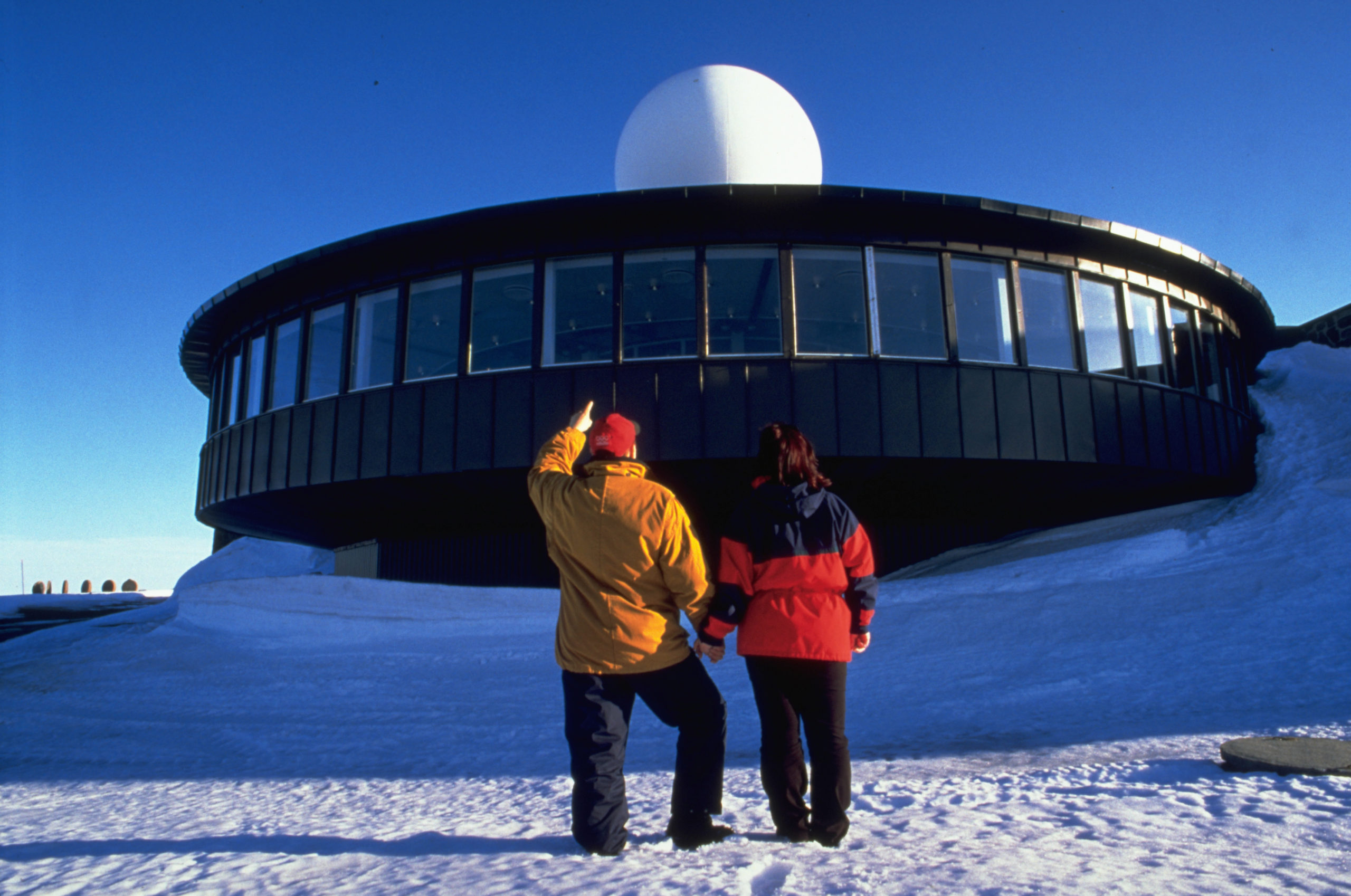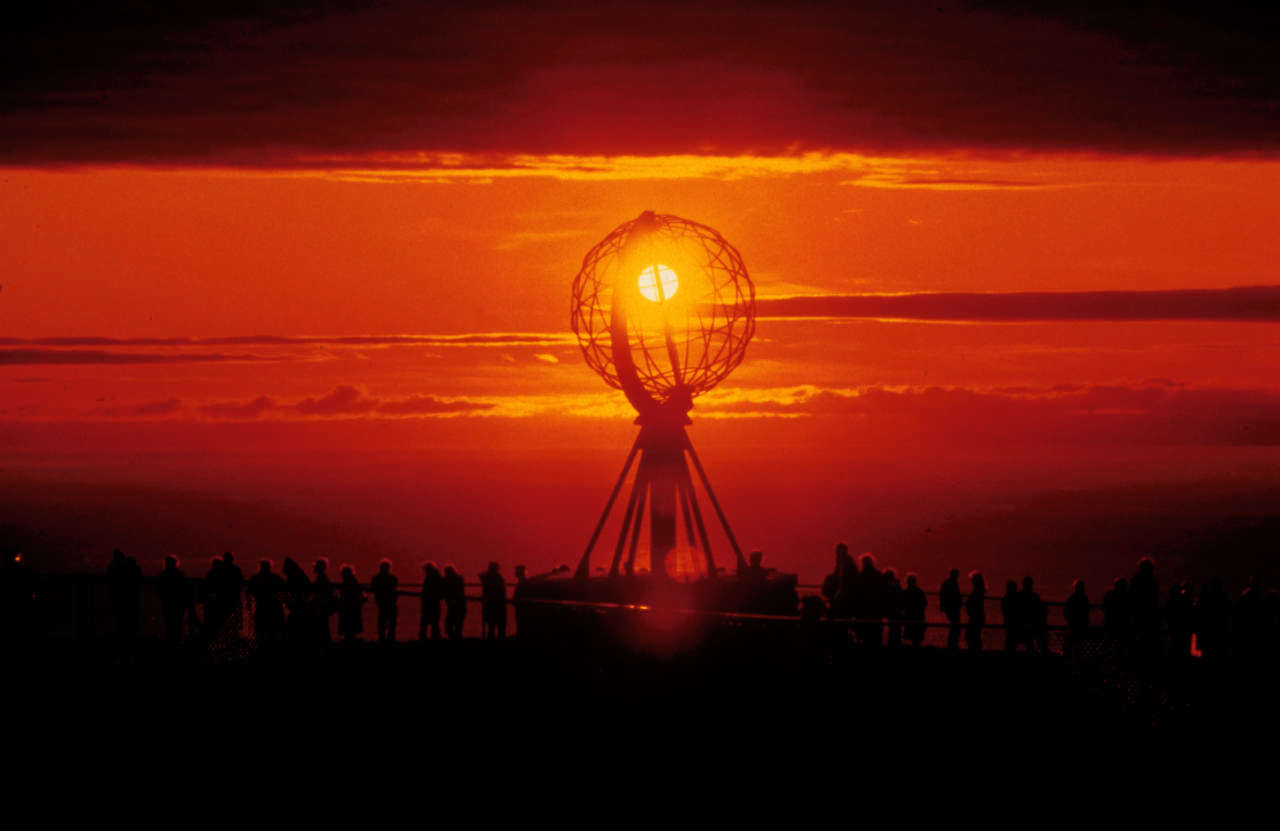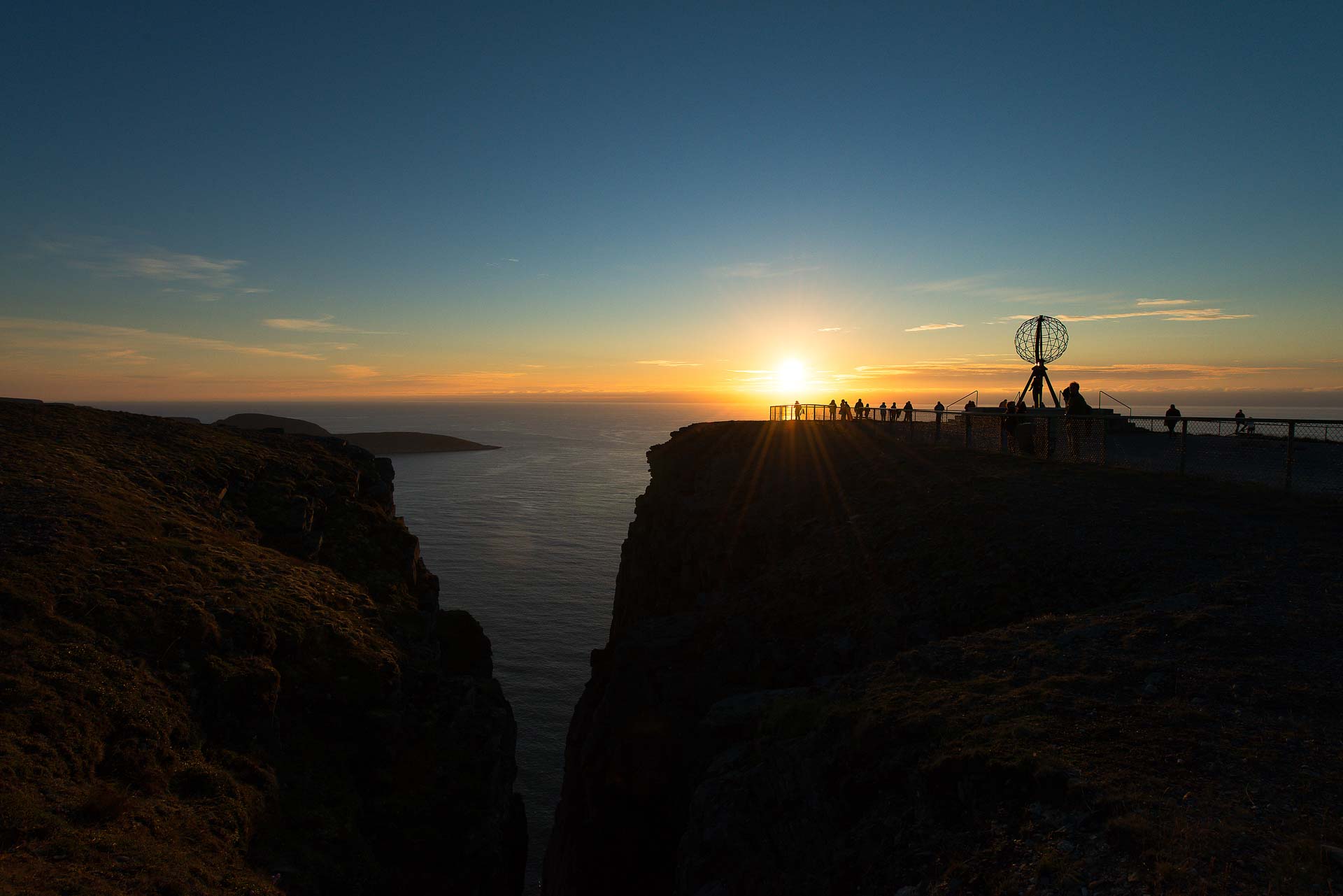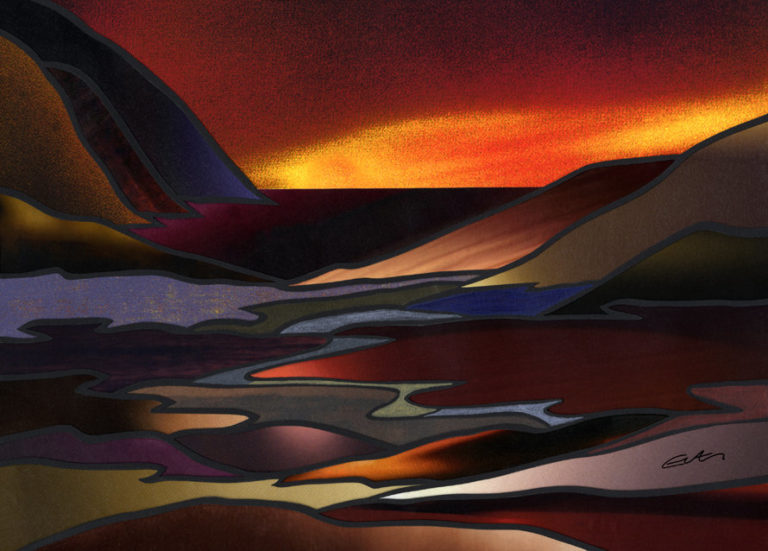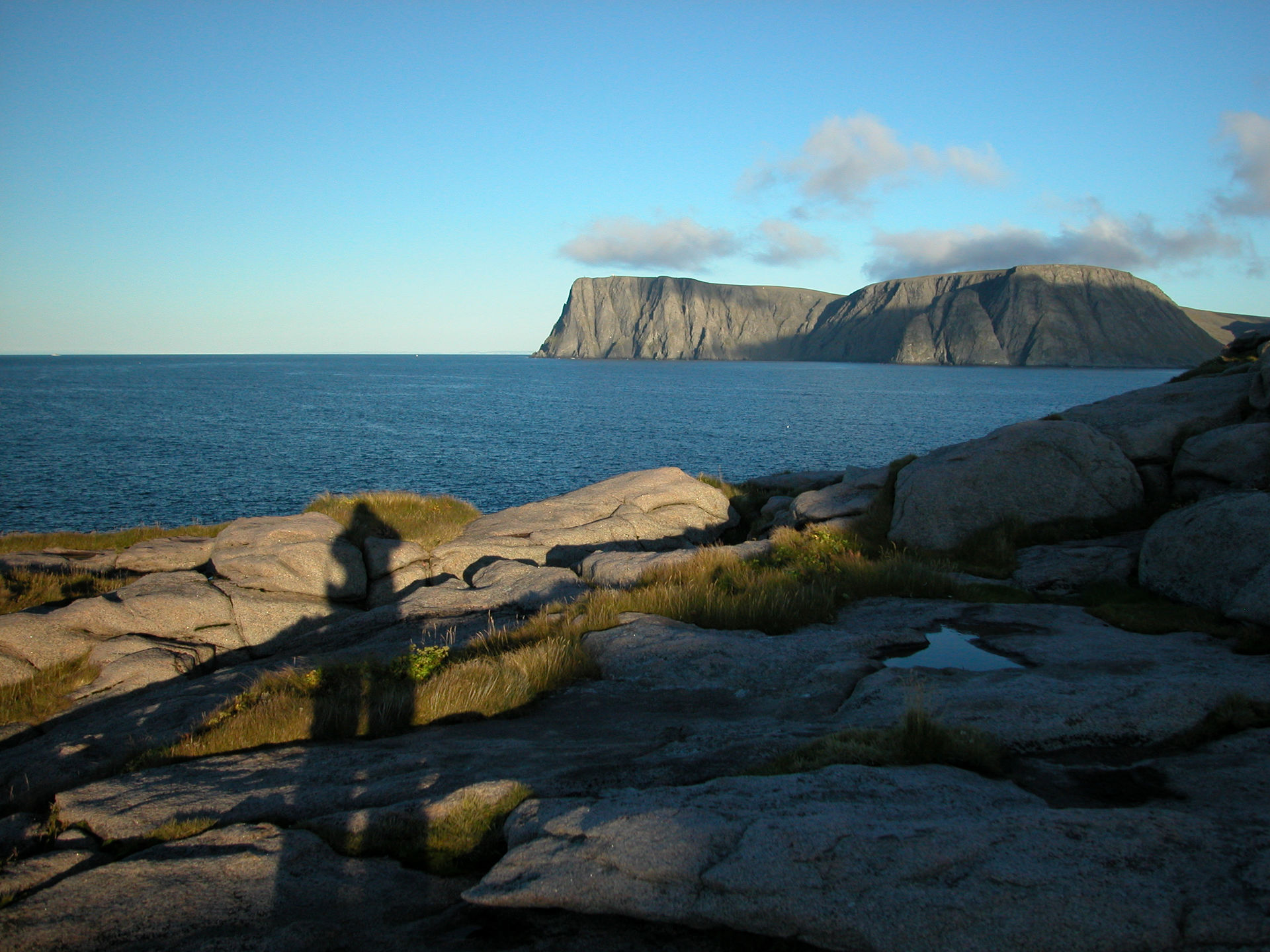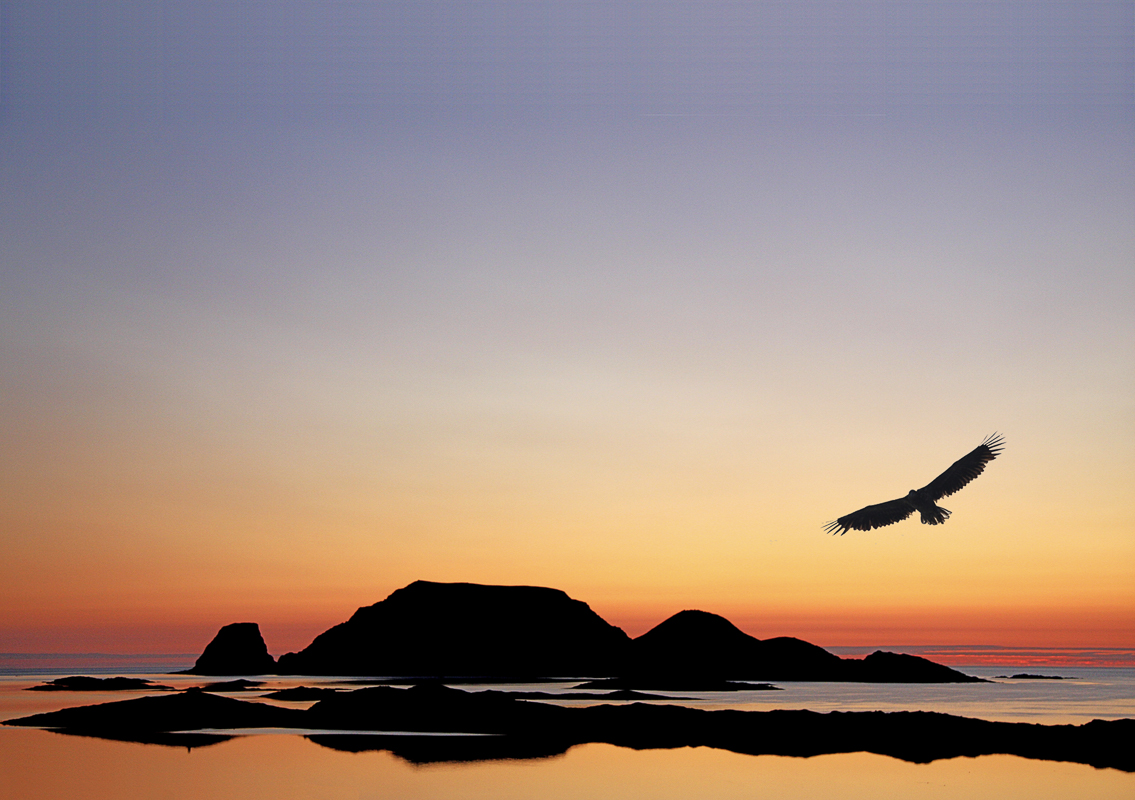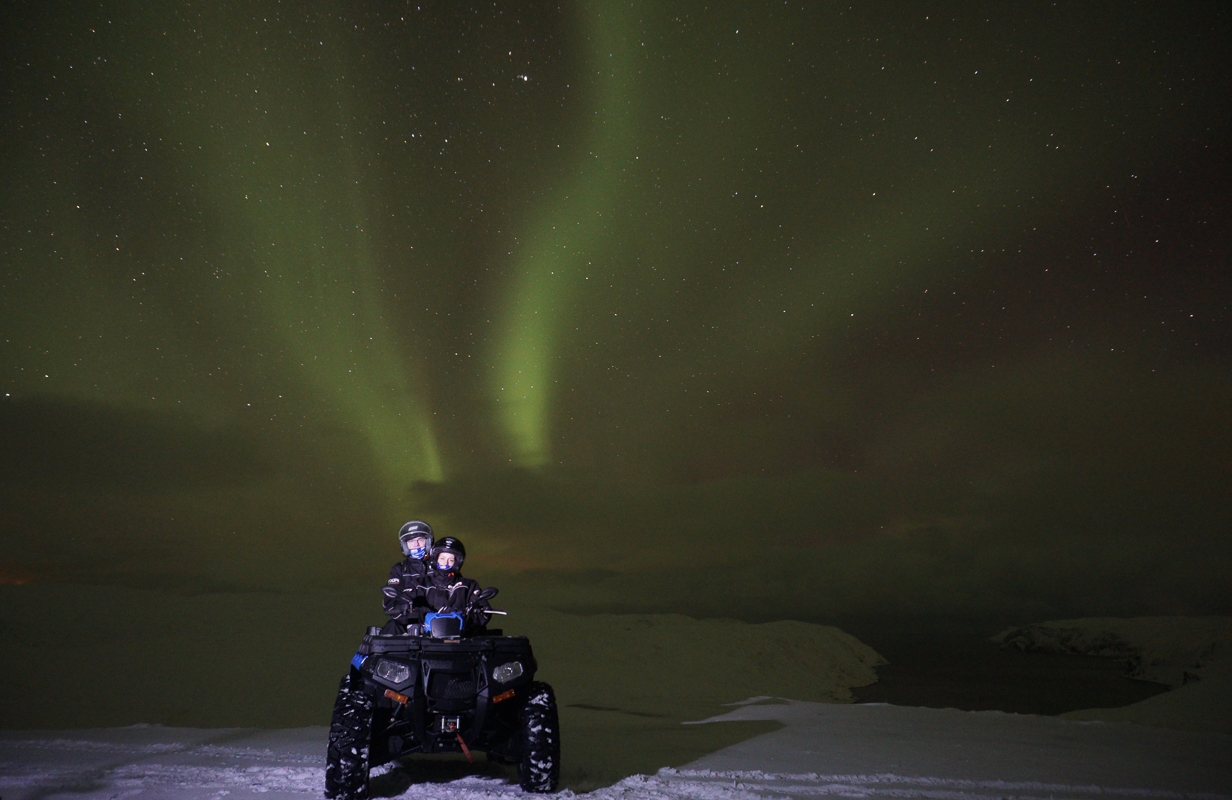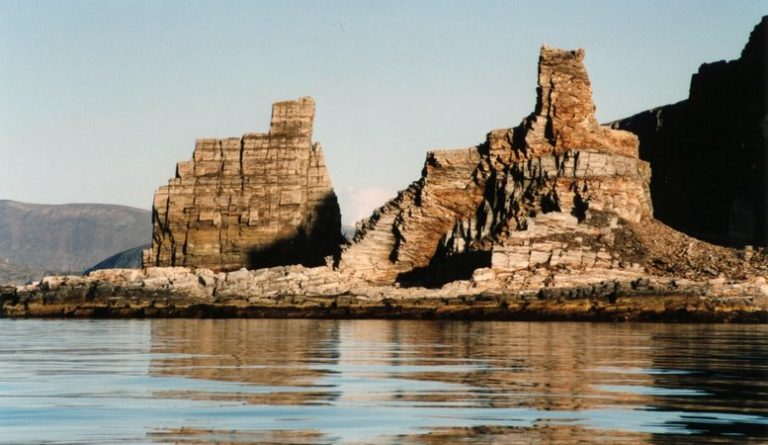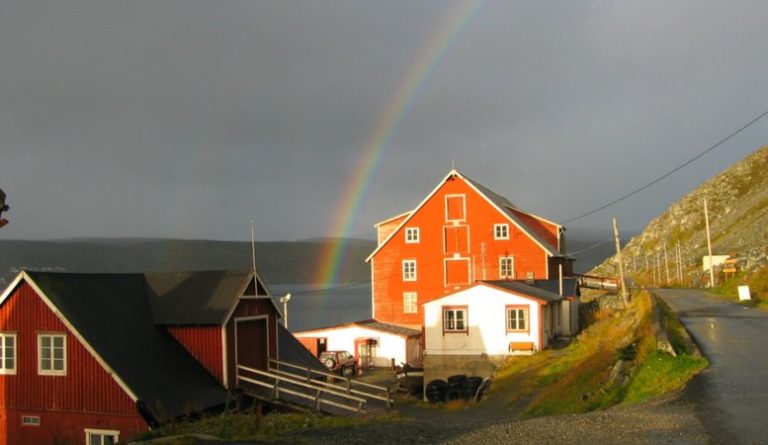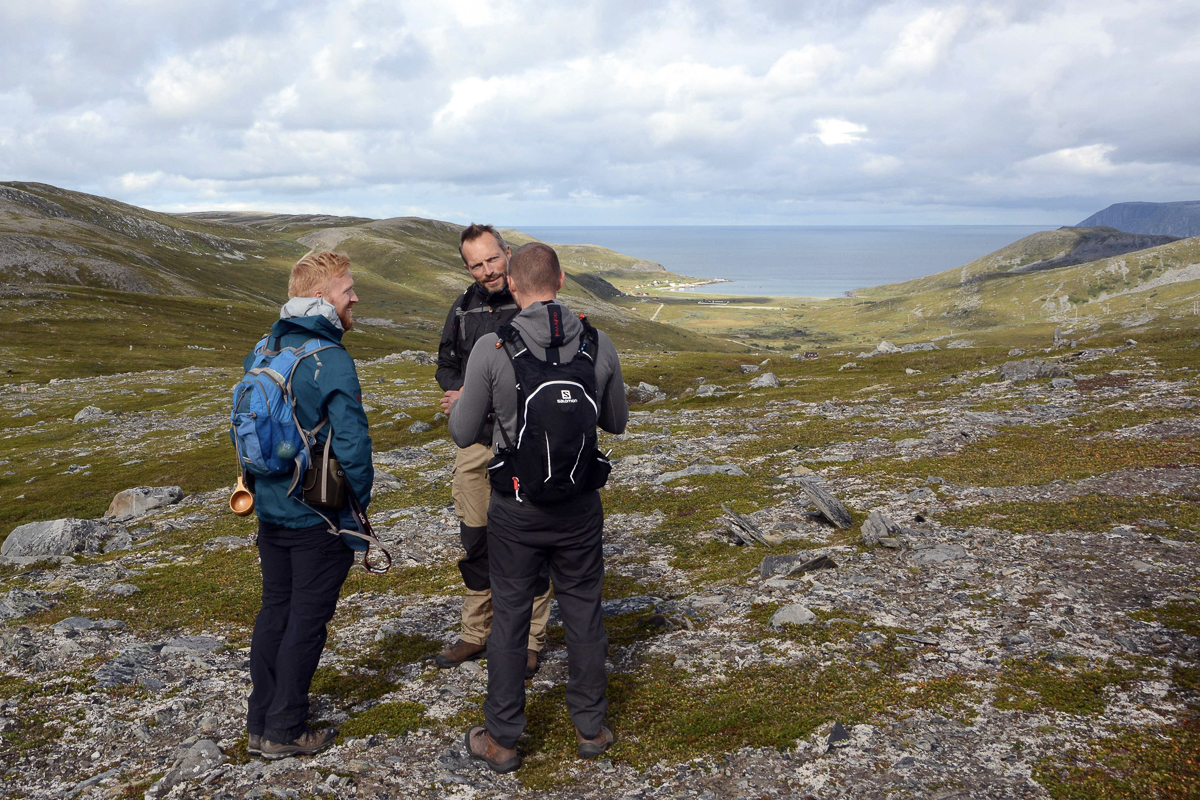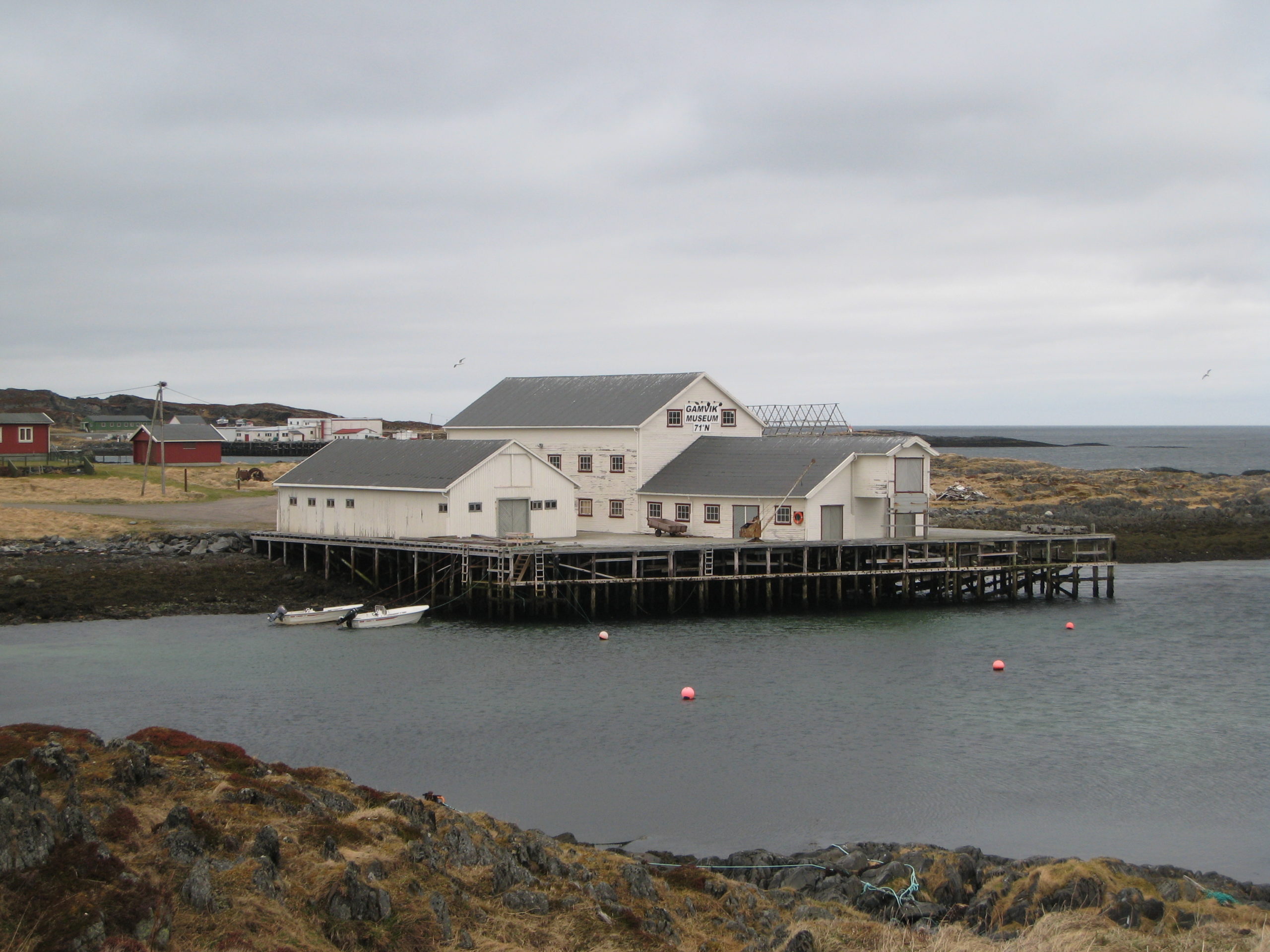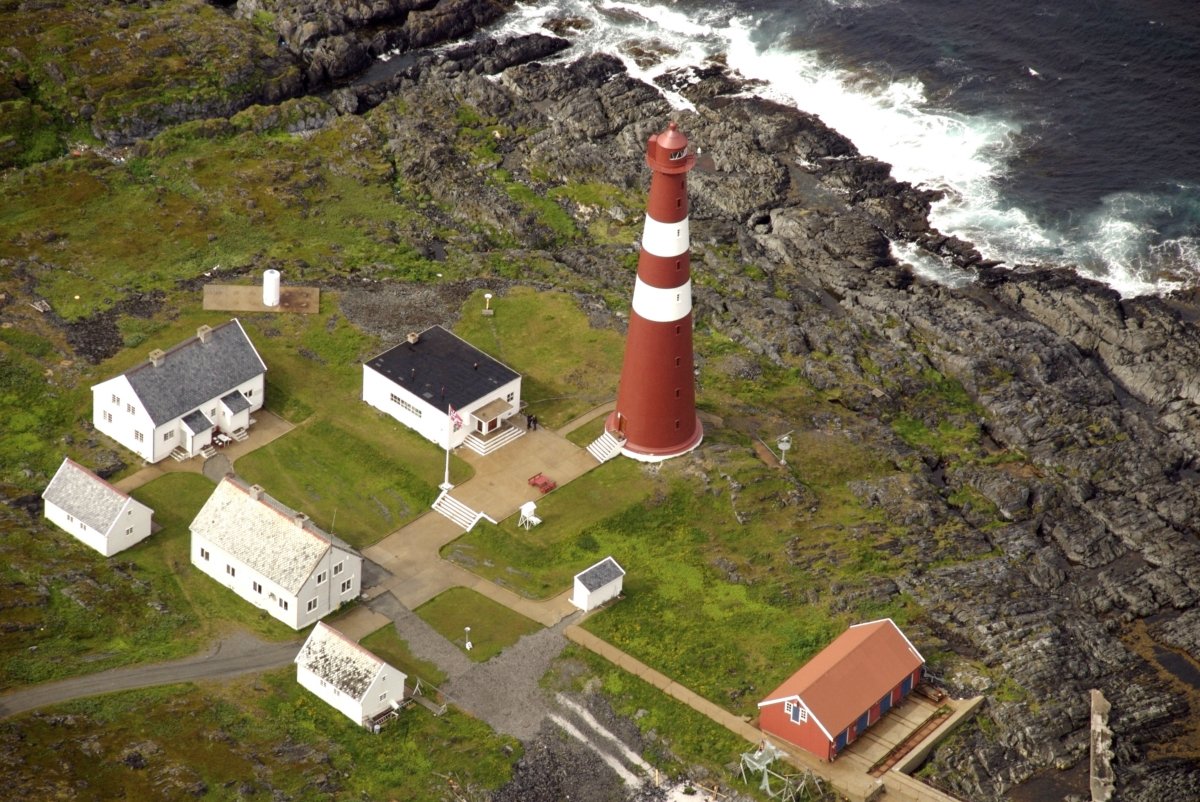A true voyager must go to Nordkapp, the North Cape, at some point in his life. These days, it is easier than before, but the end of the world feeling is still there.
This is where you turn around
At 71 degrees north, the North Cape forms the northern extremity of Europe. The 307 metre high cliff, diving directly down into the Arctic Ocean, has for centuries been a point of reference for seafarers. Along with the Cape of Good Hope, Cape Farewell, Cape Horn and Cape Comorin, it a milestone for sailors and world travellers alike.
Knyskanes is the old name
Of course, Nordkapp has never been a secret to the locals. People lived here for thousands of years, and the Sami culture emerged at least 2000 years ago. From the 14th C. onwards, there were several small communities of Norse speaking fishermen on the island of Magerøya, and they called the cape Knyskanes. Although dried cod was sold in Bergen to the international market, Europeans had vague ideas about the far north.
The North Cape is discovered and named
In 1553 a British expedition searching for the North East passage to the Far East passed the unmissable promontory, and the navigator Richard Chancellor named it the North Cape. He had noted that the coast towards the east turned slightly south. The Norwegian word Nordkapp is a mere translation of North Cape. They never found an alternative sea route to the Indies but opened trade with the Russian port city of Arkhangelsk (Archangel) instead.
Noordkap becomes a point of reference to the seafarers of the world
The name North Cape then started to turn up on sea charts and world maps, frequently named Noordkap by Dutch cartographers. Whale hunters from the Netherlands, England and France as well as traders heading for Russia meticulously chartered their passing of that milestone in this age of discoveries. Every sailor knew about it.
The first tourist gets to Nordkapp in 1664
In 1664, the Italian priest Francesco Negri reached the North Cape on foot. His summed his experience up like this: “My curiosity is now satisfied, and I can return to Denmark, and God willing my homeland”. He is the first known real tourist to reach this extremity of the world. In 1795, the French prince Louis Philippe d’Orléans was escaping French revolutionary assassins by going to places far away, among them Le Cap Nord, Nordkapp. As he also impregnated the daughter of a nearby vicar, his DNA still flows in local veins.
Modern tourism started in 1873
Oscar II of Sweden-Norway made an epic journey to the north in 1873. His ship anchored at Hornvika bay, and the young and fit king climbed the thousand steps up to the plateau itself. This kickstarted tourism, and exclusive cruise ships sailed up and had champagne in a wooden pavilion up there, before it was blown away by a storm. Another early guest was King Rama of Siam (Thailand) in 1907. The North Cape established itself as a must-see for well-heeled travellers. In 1956, the road was extended all the way to the cape, and since then most people have arrived there by car or bus.
Knivskjelodden is actually further north
We have to reveal a secret. Nordkapp really isn’t the end of Europe. There is a cape next to Nordkapp that is some 1400 metres (..almost a mile..) further north. This point is, however, a rather unimpressive place, and was never any point of reference for sailors. The hike to this point is not particularly strenuous, but you need good windproof clothing. We strongly recommend it, though, because of the view south east to the North Cape cliff. And the feeling of beating the North Cape.
Magerøya is the North Cape Island
Nordkapp isn’t found on the mainland, instead it has its own island, Magerøya. The island has a steep coast, but the top of the island is a flattish, rolling expanse. The vegetation is sparse, although low-grown birch and willow grows on south-facing hillsides. Honningsvåg, the main settlement, is on the protected inside, or southern side, of the island, and a further 3 fishing villages are found in sheltered places along the coast.
Going to the North Cape in winter
For many years, Nordkapp was totally inaccessible in winter. The road was opened at some point in spring by heavy snowploughs, and remained opened to the first snowfall. Now, it is actually possible to go there in the middle of winter. A snow plough drives first one or two times per day, and the tourist bus can follow. You then get to see the Cape rough and cold weather, really giving an end-of-the-world feel. If a Polar low suddenly strikes, the road is closed without notice, and you have to stay in Honningsvåg instead.
If you’re lucky, you can see the Northern Lights on Nordkapp
Visitors in winter often choose the tour going to the North Cape in the evening. With a bit of luck with the weather, one can be lucky enough to see the Northern Lights, the aurora borealis, on the cape itself. This is far from guaranteed, though. We strongly recommend winter guests to try their luck, but then combine with the inland location of Alta. Here the climate is more stable, and you stand far better chances of seeing the green lady.
Magerøya is summer grazing land for the reindeer
Sometimes in April, landgang vessels from the navy land, and thousands of furry invaders run on land. Reindeer, owned by Sami families from the inland community of Karasjok, graze on the island all summer. In June, they look a bit scruffy as they shed their hairs, by August the new winter fur has grown. Then Rudolph has also gained weight ahead of the upcoming winter. After the hard work of moving the reindeer, the Sami can enjoy life and look at the tourists visiting their souvenir stalls. Sometimes in September-October, the reindeer swim their way back to the mainland, and start the long walk towards the Finnish border.
Gjesvær is protected by skerries and islands
The western end of the island looks different from the rest of the island. Instead of the steep cliffs, Gjesvær is surrounded by islands and skerries, most notably the Gjesværstappan. This is one of Norway’s biggest bird colonies, with hundreds of thousands of puffins, guillemots, gannets and cormorants. In spring and summer, bird safaris go out here to see the birds.
Skarsvåg is the world’s northernmost fishing village
The little village of Skarsvåg calls itself the word’s northernmost fishing village. Today, only some 60 people live here, mainly from fishing and tourism. From here, you can walk to the natural arch in the hillside called Kirkeporten (“the church gate”), and through the gate, you can see Nordkapp, easily recognised by its horn-shaped cliff. Shoppers also stock up at Julehuset (“the Christmas shop”), but going for a walk along the dockside costs nothing at all.
Kamøyvær is a little fjord by itself
Kamøyvær is not to far away from Honningsvåg, and looks very picturesque with big boulders and rocky islands offshore, with colourful houses. Come here for the Gallery East of the Sun, with fun, colourful collage pictures from the island. The artist herself, Eva Schmutterer from Nuremberg, is usually there to explain her very special technique.
Honningsvåg used to be Little Chicago
Honningsvåg is the main centre, a mere half hour away from the cape. This is a compact little town, with shops, cafes, restaurants and hotels. In the 1950ies and 60ies, Honningsvåg got frequent visits from Norwegian and international trawlers, delivering their catch to the busy fish factories lining the dockside. Young and rough fishermen on leave visited the taverns in town, and things could get heated with the unfavourable boy/girl ratio. Black eyes and tooth loss were to be counted in when calling at Honningsvåg, earning it the nickname little Chicago. Much to the chagrin of some, things are a lot quieter these days. The decline in the fish industry has meant that the town is a bit smaller, with tourism being as important as fishing. However, at the popular watering hole “Nøden”, the best aspects of Little Chicago are kept alive, a place where you feel alone.
Facts about visiting Nordkapp – the North Cape
The North Cape is a cliff on 71 degrees northern latitude, constituting the northern end of Europe. It is found in the municipality of Nordkapp, where Honningsvåg is the centre. The nearest bigger airport is in Alta.
The term “North Cape” is the original term, coined by English navigator Richard Chancellor in 1553. This name has been used by sailors for centuries, and it would be too bad to give it up. North Cape has then later been translated into Norwegian as Nordkapp, replacing the old term Knyskanes, which today is never used. Nobody is offended if you say North Cape in English, but keep in mind that all signs point to Nordkapp. Terms like Cap Nord (French), Cabo Norte (Spanish), Caponord (Italian), Nordkap (German and Swedish) and Noordkap (Dutch) are also in use. These translations are never wrong or offensive, but are not found on maps and signs anymore.
The North Cape area used to have a hectic 6-8 weeks of tourism in summer, when the small community was overran. Then there would hardly be a tourist in sight the rest of the year. Mid May to the end of July is the midnight sun period. During this time, hotels tend to fill up, and it feels busy. However, most of the tourists come from cruise ships, being transported directly to the Cape with hardly a stop elsewhere. You can thus walk around Honningsvåg, do hikes, participate in guided tours and excursions, without feeling the weight of tourism. There is absolutely no need to avoid the island of Magerøya at this time. However, on the Cape itself, it can be pretty full around Midnight. August is still tourist season, but less busy. In September, most tourists have left. That is a shame, as the hiking is really good at this time. The Northern Lights start appearing in late August, and by mid September they appear frequently.October and November are definite low season, but the locals are busy with their daily lives. This is really the time for a deep dive into living the local life, and the Northern Lights make frequent apparitions. In December and January, the sun is below the horizon, and it’s dark almost all day. Far from depressing, this is a time for snowmobiling and Northern Lights watching.From February on, the days are longer. Then you can do longer treks on skis and snowmobiles, notably to the North Cape. March is a month when you can have it all, as the days are long, but the Northern Lights are still very much around at night. The Northern Lights are on the wane from early April, but snow is guaranteed. At the end of winter, well into May, the white expanses invite you to outdoor activities. Remember you suncream!
Honningsvåg has two proper hotels open all year. In addition, another two open in the busy summer season. There is a youth hostel open in the summer, and there is one camping site. Smaller fish camps and holiday villages are found in the smaller villages on the island. Prebooking is essential in June-July. The rest of the year, it’s not full at all.
There are buses all year from Honningsvåg to the North Cape plateau. The bus is frequently cancelled in winter due to weather, though. Honningsvåg has a little airport with frequent connections to Hammerfest and Tromsø, from where there are flights to Oslo. A cheaper option might be to fly to Alta, because of the numerous discount tickets available. From Alta there is a daily bus, and Honningsvåg should be combined with nearby destinations like Alta and Hammerfest anyway. From Alta you can also take a catamaran to Hammerfest, a very comfortable ride, and from Hammerfest you can take the Hurtigruten to Honningsvåg. You can drive from anywhere in Norway to Honningvåg all year.
Nordkyn is the next peninsula
Honningsvåg and the Cape is bustling with life in summer. However, if you take the Hurtigruten 2 hours to the next peninsula, is a different story. The Nordkyn peninsula is Europe’s northernmost mainland, and some 2300 people live her, chiefly in Kjøllefjord and Mehamn, but also in smaller hamlets. This is an area of lovely, easy hikes, small museums and tight-knit communities, and has an away from it all – feel.

Visit Nordkapp
Assisting you to adventure in and around Nordkapp, the North Cape, is Visit Nordkapp

